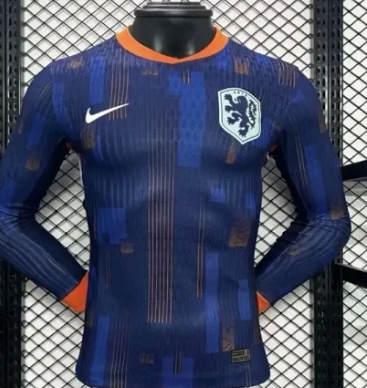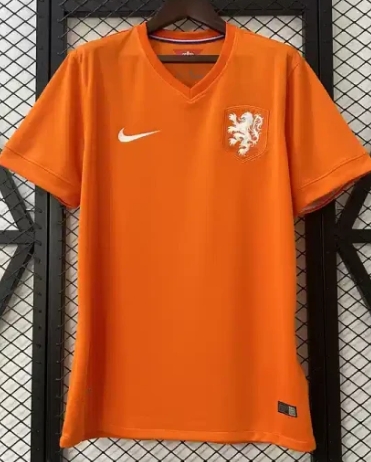The Netherlands has a rich football tradition, characterized by a strong national team, passionate fans, and iconic soccer jerseys that reflect the Dutch identity and footballing heritage. Known as "Oranje" (Orange), the national team wears their distinctive color as a tribute to the Dutch royal family, the House of Orange-Nassau. This overview will explore the history, significance, and evolution of Netherlands soccer jerseys, as well as notable achievements of the national team.
netherland soccer jerseys football YUPOO china B2B2C Wholesale Supplier Branded national netherland soccer jerseys retro shirts, join us on whatsapp | Yupoo fashion national netherland soccer jerseys players jerseys football retro jerseys reseller online store , Yupoo jerseys Replica top version for yupoo wholesale drop shipping jerseys to worldwide.
Football was introduced in the Netherlands in the late 19th century, and the Royal Netherlands Football Association (KNVB) was established in 1889. The first Dutch clubs emerged, and by 1908, the national team played its first international match, which marked the beginning of organized soccer in the country.
The iconic orange color became associated with the Dutch national team due to its historical connection to the royal family. The team's first jerseys were simple and typically featured a white base with orange accents. As football gained popularity, the design and style began to evolve.
The post-World War II era saw the Netherlands emerging as a competitive force in international football. During the 1970s, the Dutch philosophy of "Total Football," pioneered by legendary coach Rinus Michels, revolutionized the game with an emphasis on fluidity, teamwork, and positional interchangeability. This era brought significant success for the national team.
The 1974 FIFA World Cup held in West Germany marked a turning point for Dutch football. The national team, adorned in their vibrant orange jerseys, captured the attention of the world with their exceptional style of play. Players like Johan Cruyff, Johan Neeskens, and Ruud Krol became legends, epitomizing Total Football.
The Dutch jersey of this era featured a classic design, combining orange with black trim. The visual representation of the team became synonymous not only with their attractive style of play but also with the cultural pride of the Netherlands. Although the team finished as runners-up to West Germany in the final, the impact of this tournament laid the groundwork for future successes.
In 1988, the Netherlands achieved a monumental milestone by winning their first major international trophy at the UEFA European Championship in West Germany. Under the management of Rinus Michels, the team showcased remarkable talent and cohesion. The iconic jersey worn during this tournament featured a distinctive geometric pattern and was instantly recognizable.
Key players such as Marco van Basten, who scored one of the greatest goals in European Championship history in the final against the Soviet Union, made this jersey legendary. The success of the national team, paired with the striking design of their jerseys, helped cement their identity in international football.
Over the years, the design of the Netherlands soccer jersey has evolved, reflecting changes in fashion, technology, and the broader aesthetic trends within the sport.
1990s: The jerseys of the early 1990s introduced bolder graphics and patterns, moving away from the simplicity of previous designs. The incorporation of the KNVB logo and sponsor branding became more prominent. The addition of various shades of orange, including darker hues, allowed fans to express their national pride.
2000s: The jerseys continued to evolve with the introduction of innovative materials that enhanced performance. The designs also started to feature unique patterns and artistic elements, such as asymmetrical lines and stripes. The 2006 World Cup saw the introduction of a new orange jersey with a sleek, modern look that resonated with fans.
2010s and Beyond: In recent years, the jerseys have maintained the iconic orange color, with various shades and designs introduced for different tournaments. The 2014 World Cup featured a fashionable design with minimalistic lines, while the 2016 UEFA European Championship's jersey showcased a blend of traditional and contemporary styles.
The Netherlands soccer jersey is more than just a piece of clothing; it symbolizes national pride and unity. Wearing the distinctive orange jersey is a powerful statement of loyalty and identity for Dutch fans. During major tournaments, the streets of Dutch cities turn into a sea of orange, as supporters dress in their national colors, celebrating the passion for their team.
The jerseys have also become collectibles, with fans seeking to obtain vintage designs that represent various eras of Dutch footballing history. The significance of the jersey transcends the field, serving as a source of pride for generations of players and supporters alike.
In recent years, the Netherlands national team has made significant strides in rebuilding and re-establishing itself as a competitive force in international football. Under the management of coaches like Ronald Koeman and Frank de Boer, the team returned to prominence, showcasing promising young talents alongside seasoned veterans.
The latest iterations of the orange jersey continue to honor the team’s rich history

